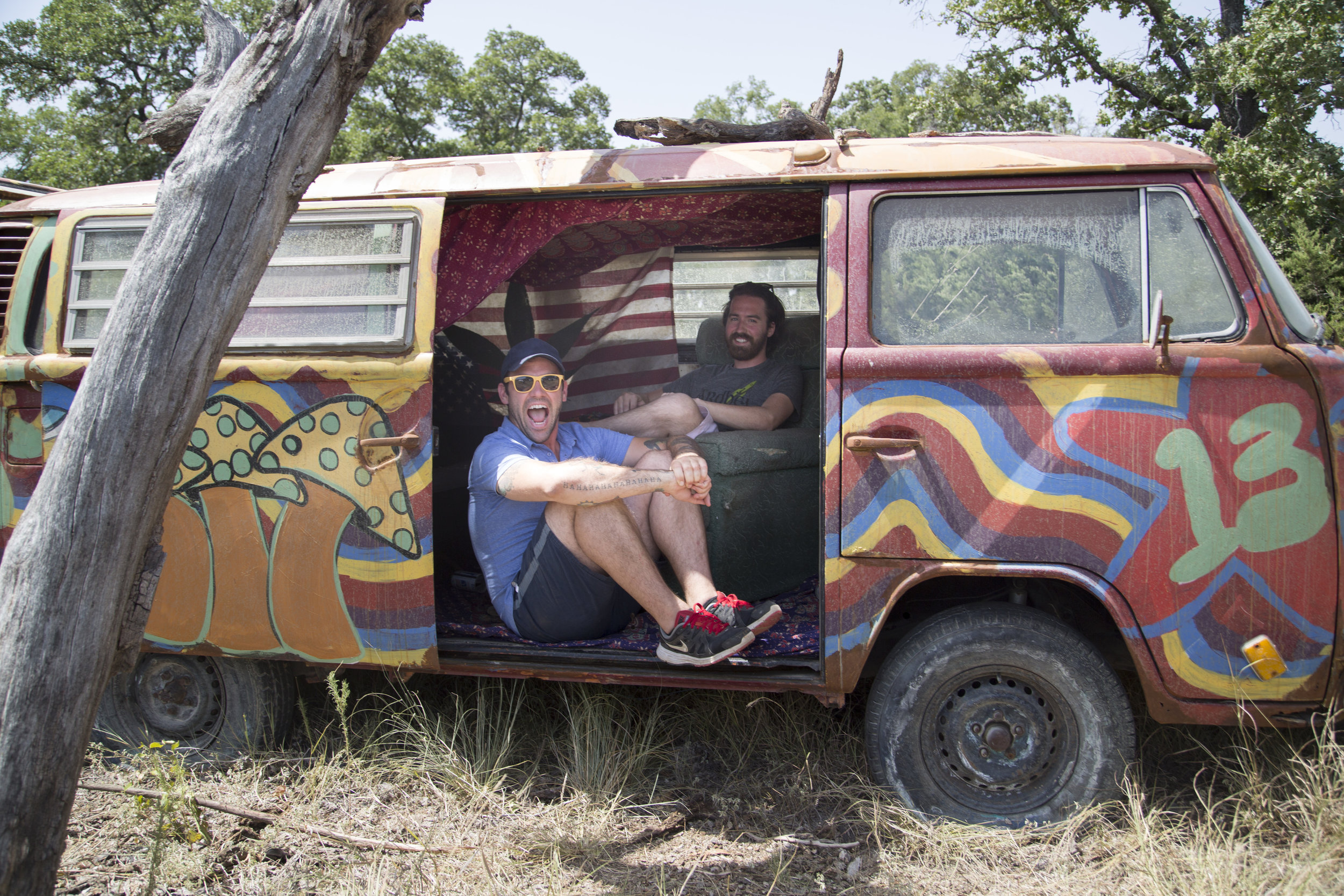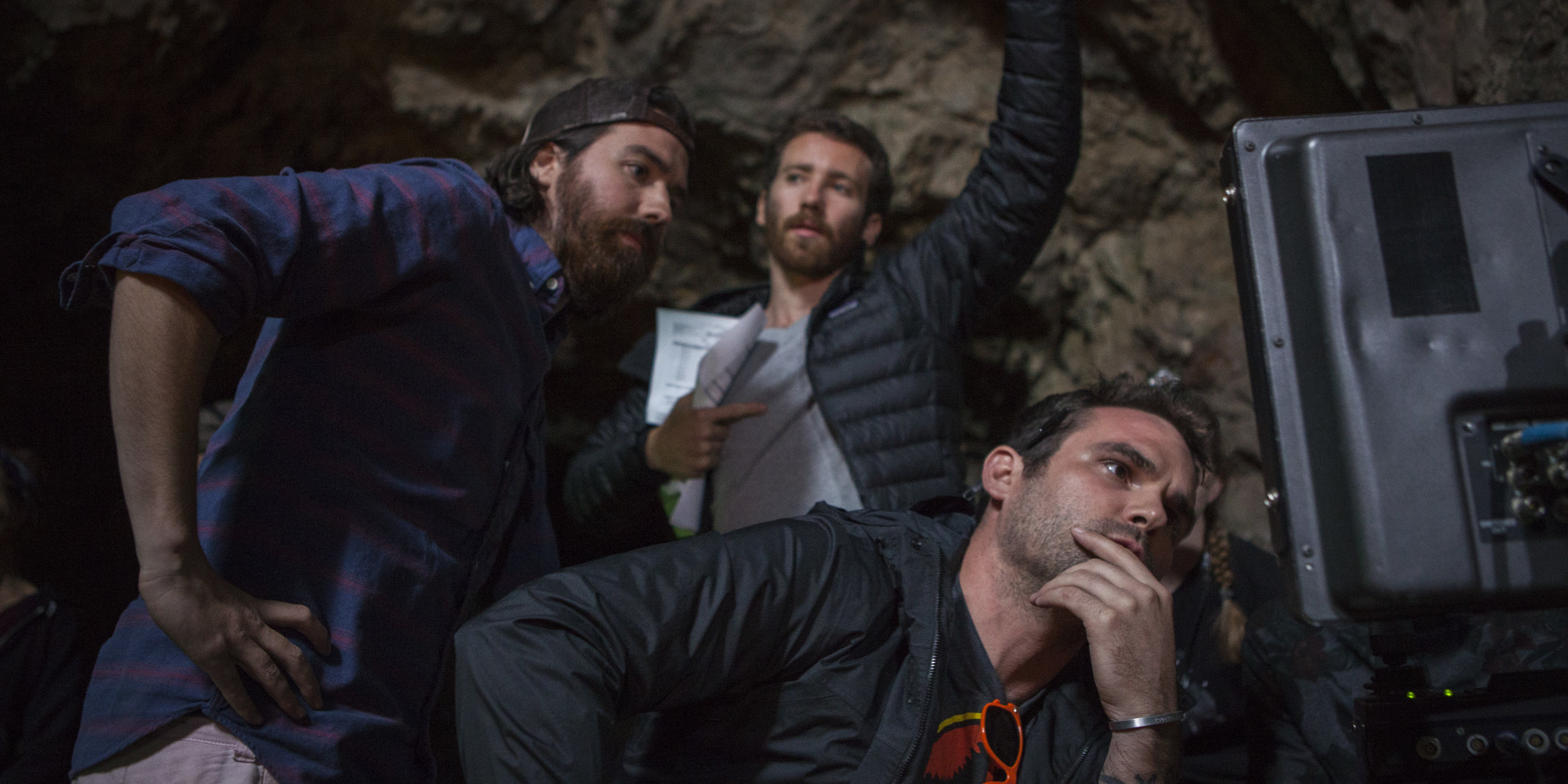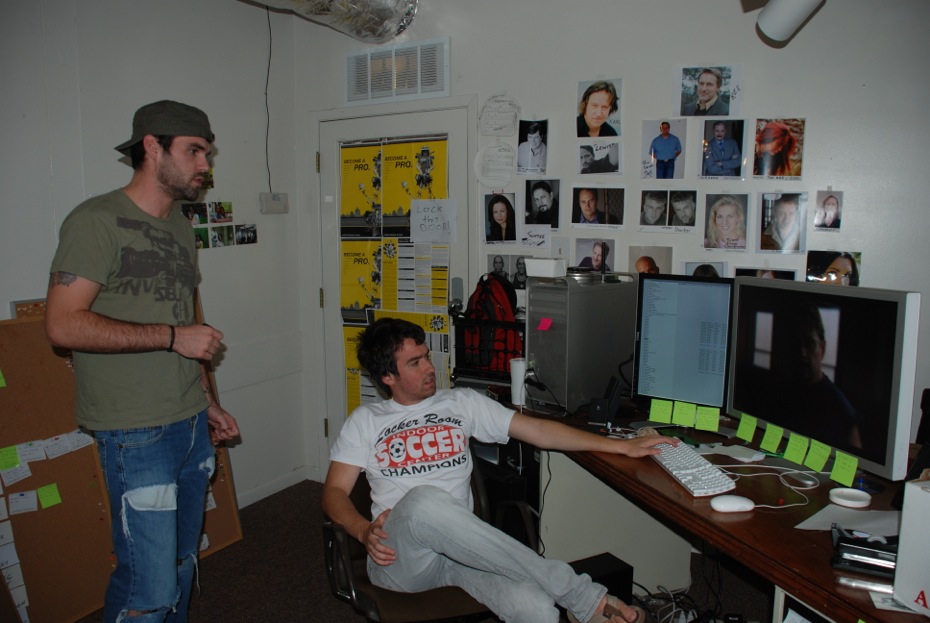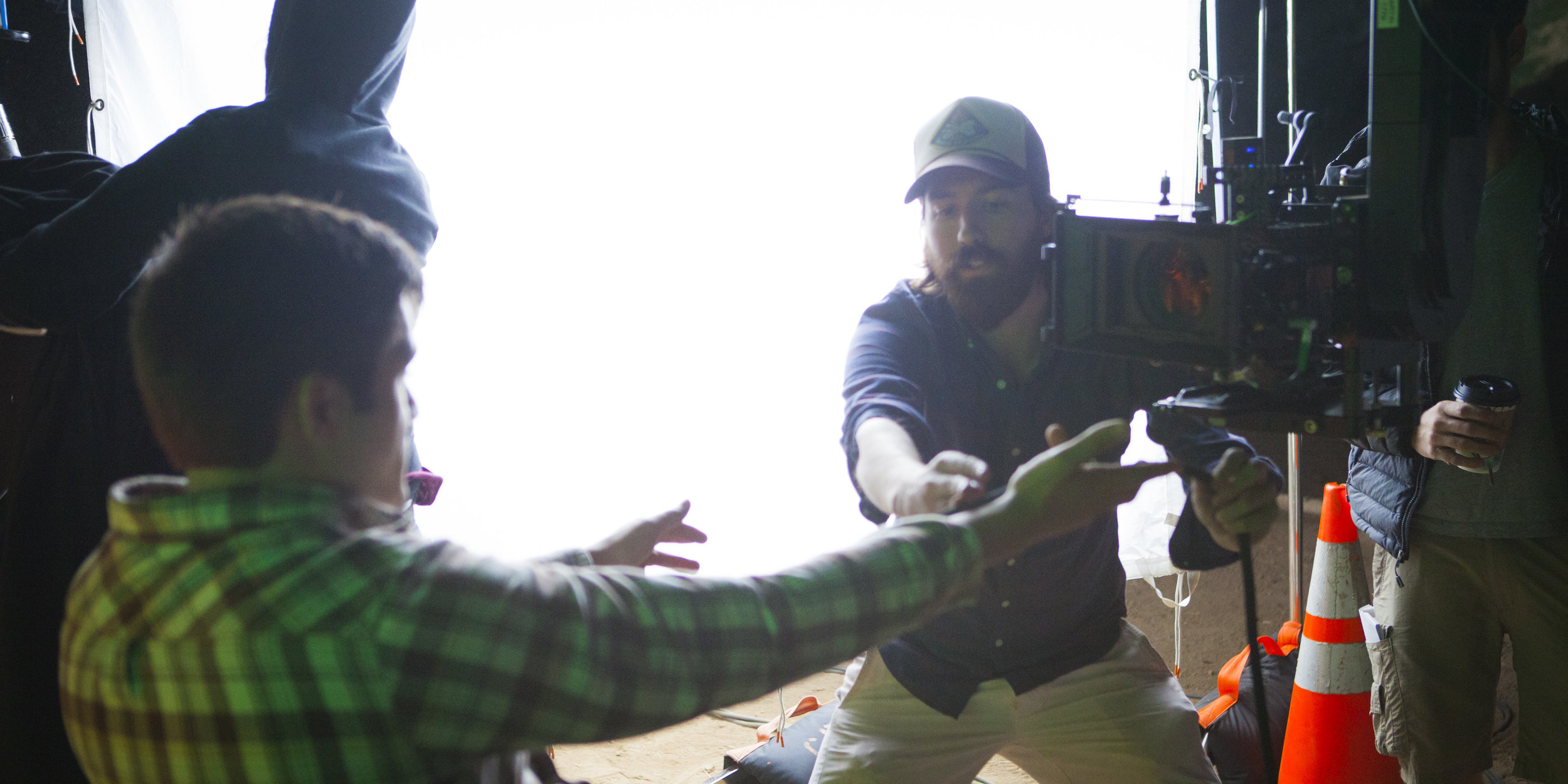FILMMAKER INTERVIEW | Ben Foster, Co-Director of "Time Trap"
Only FOUR Texas feature films were selected to screen at the upcoming 2017 Austin Film Festival. One of those films is Time Trap, a mind-bending sci-fi adventure centering around archeological students who trace their professor to a mysterious cave where a rift in the space time continuum causes time to pass differently than on the surface. Ben Foster is one of the co-directors of the film, as well as an Austin School of Film alumni! We spoke with him about his work on the film, his time at ASOF, and where his passion for filmmaking has taken him.
Now that it's finished, what's watching the film like? Are you able to separate yourself as the director and experience it as an audience member? And along with that notion, when you see the film as an audience member, what does the film speak to you on a personal level? What's it about?
Ben Foster: I've just recently been able to separate myself from making the film and letting it exist on it's own. Movies are kind of just abandoned and never really finished. It's a movie with a cool puzzle, and I love seeing the audience try to work it out as Mark [Dennis]' script takes them through turn after turn.
The movie is a throwback to the kids-in-danger wrapped into a high-concept adventure stuff that we grew up on. It's a great ride.
This is your second feature film working with Mark Dennis. Talk to me about the dynamic that you guys have established: how has it evolved from the time you were working on "Strings" to now working on "Time Trap" years later?
BF: We started before Strings. In a class at the University of Texas, Mark and I teamed up on a project in a video-narrative class. Mark was always the guy with awesome ideas and stories that were deemed too-complicated-to-make by our teachers. I'd always rather be working on something high concept and unique and those things tend to be difficult-to-make. My time at the Austin School of Film and having grown up here in Austin gave me the confidence to tackle his ideas, so we started making short films.

Both Strings and Time Trap are Mark's stories, but I come in early to help develop them into something we can pull off. In pre-production, we spend a lot of time aligning our vision and getting on the same page about how we want to do certain scenes. Most of the time, our instincts and taste are the exact same. When we're on set, since they're his characters, he usually runs through scenes with the actors, I'll get our camera and lighting guys all set, then we'll switch. I usually call action, he calls cut. We don't use an editor, so instead we spend time handing the cut back and forth with each other until we're happy.
Where did the concept for "Time Trap" come from, and what was the process like developing the script? The premise seems so dynamic and interesting, but I can imagine the challenge of building a story and characters around it.
BF: That's what Mark is so talented doing. He comes up with this insane concept, then carries the audience into that world with fun characters. The first draft was sent to me while I was in Scotland shooting a Whisky commercial. Mark was on a beach in Thailand. We were in the process of getting money and resources together to make a different movie in the fall with our producer Zach Matz.
The draft Mark sent me was a 60-page incomplete script, but I knew immediately that it was way cooler than what we were planning on. Any time travel movie has layers of rules and logic that took a long time to flush out, so we kept the start date for our other movie and basically just switched the scripts.
A majority of the film takes place in this cave location. From a production standpoint, what were some of the benefits and challenges of having such a unique location to house this story in? What was the vibe of the set for the cast and crew?

BF: The benefit of course is that it's a real cave and looks incredible. However, the challenges were almost insurmountable. Everything we brought into the cave had to be pulled back out at the end of the day, so it meant the crew lugging lights and equipment in and out each day. There was never a walk-away-set like on a studio movie. There's no electricity, moisture destroyed all the batteries, the walkie talkies didn't transmit through the rock, the wireless mics had all kinds of interference, and just working in the elements made it a really difficult experience. I'd say the overall vibe was exhaustion and misery.
Why was it important for you to make this film in Austin?
BF: Not only is the region riddled with caves, but since I'm from here, I could call on help from friends to help pull off Mark's challenging script. Austin has a great pool of talented crew - many coming out of the RTF program at UT and Austin School of Film students.
Let's go back to the beginning for you. Where did your passion for filmmaking begin?
BF: My dad. We used to make short films or do magic tricks using the camera when I was young. The illusion that the camera could create always amazed me. That you can turn flat ground into a cliff just by turning the camera on its side. We actually used some of these cheap camera tricks making Time Trap.

Talk about your time making films at Austin School of Film. This place has changed so much, and I want to capture the vibe of the environment back when you were there. How prevalent was ASOF for you as you got your start?
BF: My dad saw a crazy Hungarian Filmmaker named Barna Cantor on a morning show promoting what was then called "The Center for Young Cinema". He thought that would be a good fit for me and signed me up for a class when I was 15. I took the class and joined a group of kids that were way cooler than me - they wore all black and listened to Explosions in the Sky before it was trendy. One of the kids was Rusty Kelly. His mom, Anne, had started the film school with Barna.
Barna opened the first class, stating that "Film Is Dead". In spite of that, and with his guidance, we all made our short films. He helped get equipment together and advise on why our stories were or weren't compelling, and once they were edited (on a precursor to Final Cut Pro called Media 100), we had a screening at the Hideout for an audience of about 50. He must've been impressed with my editing, because Barna hired me to edit wedding videos he'd shoot for 200 bucks a pop. It was the first time I had been paid to do anything film related, and I think engrained in me that this could be more than a hobby.
The graduates of that class went on to attempt making a feature length, a West-Texas zombie movie. There was to be no director, just the 8 of us figuring it out. Rusty wrote a 150 page script, we cast friends our age to play the main characters, and Rusty's mom, Anne, tracked down people to play the adults. She found a guy name Karl Anderson, who eventually become one my closest collaborators and friends.
The film was shot on 16mm and became my first exposure not only to the real cameras at Panavison, but to Los Angeles. The only places that developed 16mm were in LA, so I remember talking to them on the phone about how we wanted everything exposed and transferred to Digital. We never finished the zombie movie, which was called "Shores of Another Sea", but it gave me confidence to tackle something bigger than short films.

When I made my first [completed] feature, Strings, with Mark Dennis, Anne gave us a tiny office upstairs at the school. We cast Karl because he's one of the best Texas actors out there and is a guy that keeps you inspired when everything seems impossible. These are important people to surround yourself with when you make movies. Story and technical execution aside, between the schedule, weather, talent, opinions, and egos, movies are almost impossible, and I think the most comprehensive art form there is.
Since I started there in 2001, the school outgrew its loft at 501 Studios, was re-named the Austin School of Film. Moved, and moved again. Each year, there's a fresh class of students ready to make their films or learn the latest cameras or software, but I'm glad I got to be there at the beginning. It was harder to make a movie when cameras weren't built into phones, and computers didn't come pre-loaded with editing software. I think that's what made it fun.
The film has now played at SIFF and is about to play at AFF on the 28th. This may not be a question have an answer to, but where does the film go from here? Distribution? More festivals?
BF: Time Trap heads to the Hollywood Film Festival and then in January it'll have its International Premiere in Japan at the Yubari Fantastic Fest.
And what's next for you? Another feature?
BF: We've got another one in the works that will be an adventure set in the American Southwest.
What advice would you give to someone who wanted to have a life creating film? The sort of advice you may have gotten or wish someone had told you when you started shifting from making movies as a hobby to making it their life?

BF: I feel like I'm still trying to make it, so this is a hard question to answer, but I'll tell you what I think so far. I love Texas, but the film business will always be rooted in Los Angeles. We can't isolate ourselves from that. It's important to spend some time there and at least get a handle on how the business works, especially while you're young. The friends you make when you're young are the ones that will eventually move up the ranks of Hollywood and could help open doors later. I wish I'd gotten there sooner, but there's also something to be said for having made two feature films here in Texas. So I think if you're able to execute something at a level that will get you into film festivals or the interest of distributors, go for it and try not to quit. You will want to quit. If you never feel like you want to quit, then you're either extremely lucky and somehow made it or you're not trying hard enough.
INTERVIEW BY: Spencer Mirabal
Time Trap will have two screenings during Austin Film Festival. For dates and times, click HERE!

